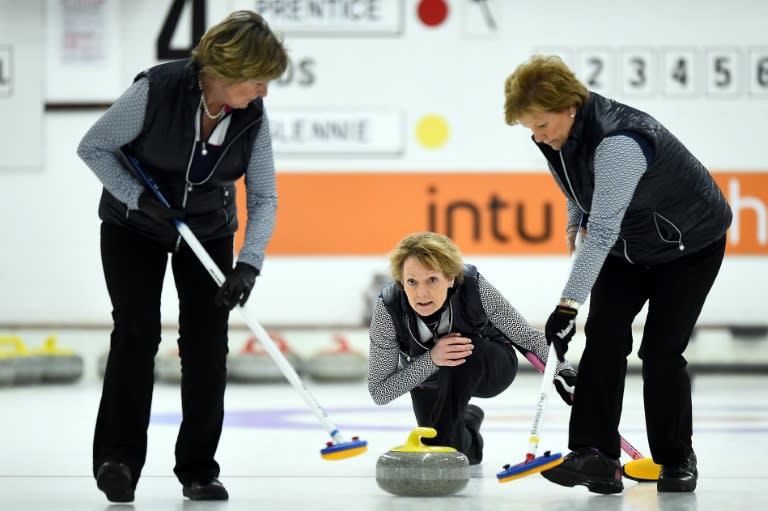Curling is in Scotland's blood -- and stone

Scotland's tight-knit curling community pledged Friday to come back stronger after their Olympians saw their chance of a gold medal evaporate in Pyeongchang. Despite the disappointment of their defeat to Sweden in the semi-final, Britain's women are still in with the chance of a bronze medal on Saturday. The men's team were knocked out earlier. The sport of curling is literally part of the Scottish landscape. The 20-kilogramme stones that glide towards icy targets around the world are exclusively carved from a tiny volcanic rock off Scotland’s west coast, a few miles out to sea from US President Donald Trump's golf course at Turnberry. The world’s oldest curling stone inscribed with the date 1511 was found in a drained lake in the town of Dunblane, birthplace of Scottish tennis ace Andy Murray. Scottish players dominate the British Olympic teams with siblings Eve, Glen and Thomas Muirhead forming the cornerstone of the men's and ladies' GB teams -- and for them curling is in the blood. Dad Gordon is a former World Champion and still plays professionally at home. He was competing in the Scottish Seniors championship while his girl was taking on Sweden at the Olympics, and he finished his heats just in time to rush off to watch his daughter's valiant performance. "I'm from a curling family," he told AFP at Braehead Curling Rink, near Glasgow. "My father curled, my grandfather curled, my uncle was twice world silver medallist and so it just passed down, it was just a natural thing to do. - Increasing the profile - "I started by going to watch my father curling. My kids got dragged along to the ice rinks when I was playing and I used to play quite competitively a lot so it was just something that they were always going to do. "The whole profile has been upped... because the Olympics is just enormous. "They’re pushing it, and I know the commentators on TV are pushing it to try and get folk to come and try. A lot of the ice rinks are doing come and try sessions. It's a game that you can play from seven to 70." The Muirhead clan are keen to broaden curling’s appeal, not only beyond their own family but also south of the border in England where it remains a niche sport. "There's only one facility in England just now and that's in Kent, and hopefully we'll get more facilities down in England," said Gordon. "We've got 20 to 25 curling facilities in Scotland so we're not too bad. Nobody is hours away from a curling facility, so hopefully we get a few more down in England and get a bit of interest." Curling fans flocked to Braehead in their droves on Friday to watch the action taking place both at home -- and over 5,000 miles away on television. Susan Kesley, a curler who plays at Murrayfield Curling Rink in Edinburgh, said: "I think the girls will be absolutely gutted after losing that game. I know how much work they all put in. "I hope with the amount of really good television coverage we’ve had it will bring people into the sport, and that’s what we would like, getting more young people turning up at the ice rinks to come and try it." Keith Prentice, former World Championship winning curler, said: "I see no reason why they cannot continue on, especially the mens team as well because they’re quite young, and they’ve a long way to go yet, so the future is good for Scottish curling."

